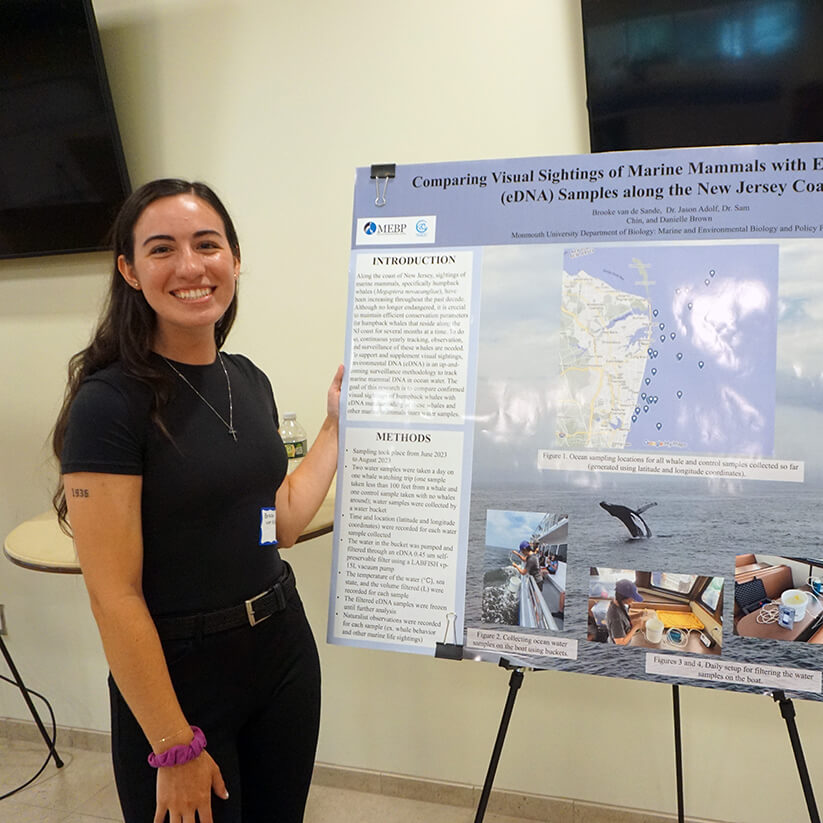This summer, marine and environmental biology and policy student Brooke van de Sande conducted experimental research on the accuracy of detecting humpback whales with trace genetic materials floating in the ocean. Working aboard Jersey Shore Whale Watch’s tour vessel, van de Sande collected water samples when whales were observed nearby and will now work with Monmouth University faculty researchers to lab test them for the presence of environmental DNA (eDNA).
Below, van de Sande discusses her research at the 15th Annual School of Science Summer Research Symposium. Each year, the school hosts the public poster session, where students can present the work they conducted from May-August under the supervision of faculty mentors. Abstracts of all of this year’s presentations are available online.
Poster Title: Comparing Visual Sightings of Marine Mammals with Environmental DNA (eDNA) Samples Along the New Jersey Coastline
Faculty Mentors: Jason Adolf, Ph.D., and Sam Chin, Ph.D., Monmouth University Department of Biology; Danielle Brown, Jersey Shore Whale Watch/Rutgers University Department of Ecology, Evolution and Natural Resources
Funding Sources: Monmouth University School of Science; Department of Biology; Urban Coast Institute
Abstract: Over the last decade, there has been an apparent increase in marine mammal sightings, specifically humpback whales (Megaptera novaeangliae), along the New Jersey coast. To maintain effective conservation parameters for these and other cetaceans in the area, it is crucial to track and understand how they move about and use the New Jersey coastline as their habitat for large periods of the year. Although visual surveillance is commonly used to track marine mammals, the use of environmental DNA (eDNA) holds promise as a supplementary surveillance methodology. This research aims to compare visual sightings of humpback whales with detections by eDNA metabarcoding. Samples for eDNA detection will be taken within 100 feet of whales then be compared to the eDNA from the control samples that were taken when there were no visual sightings of whales in the area or on a given day. It was hypothesized that DNA would always be detected in the water for humpback whales and any other marine mammals that were visually observed from 100 feet away or less. It was also hypothesized that DNA would continuously be detected in the control water samples without any visual sightings due to whales residing along the coast for several months at a time. To assess how other factors affect eDNA signals, variables such as whale behavior, location, water temperature, sea state, and other marine animal sightings were recorded for each sample. The information gained from this research will allow for a greater understanding of how cetaceans utilize the New Jersey coastline during the summer months while providing support for ongoing visual sightings.

